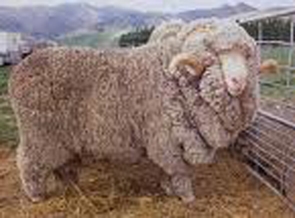
The merino industries innovative approach to marketing has seen the development of two strong brands in Icebreaker for its wool product, and Silere for its meat. Their success has seen a need to grow volumes to meet the customer demands for these products and with some of the land now not avaliable through tenure review this sector needs to look for alternative areas to run these sheep.
Dryland areas without access to irrigation are areas of potential for growth but big changes to the traditional merino are needed if farmers are to be convinced to switch breeds. This is the challenge for Dr Mark Ferguson as he strives to build a better multi purpose sheep by identifying the productive genes farmers can profit from. To be profitable with sheep, farmers need good prices from both wool and meat, but with the crossbred wool sector in such disaray, maybe sheep with finer wool and backed by a strong consumer brand, could be the way of the future.
Share with us your thoughts on NZ Merinos push to expand the nations flock?
The New Zealand Merino Company (NZM) is investing in production science initiatives to unlock the potential of the perfect sheep. It will thrive across a range of geographic areas and combine great quality meat and wool traits in the same animal. With assistance from the government's Primary Growth Partnership (PGP), leading this transformation is Dr Mark Ferguson, a respected geneticist who specialises in fine wool sheep.Ferguson, who has moved to Christchurch from Western Australia to join NZM, says "Merino have been managed and selected mostly to produce wool for the last two centuries and therefore remain relatively unselected for meat and reproduction traits. "There is enormous scope to bring more balanced selection and more strategic nutrition into the Merino industry to unlock its potential."
Ferguson will drive such initiatives as extending the geographic range of fine wool sheep, facilitating the uptake of estimated breeding values (EBVs), providing robustness including solutions to footrot, and facilitating the development of the sheep that combines the optimum traits for productivity and returns. The benefits for the market will be evident in greater confidence of supply and consistency of quality, and exciting contract opportunities with the likes of Icebreaker on the fibre side and Silere alpine origin merino for meat.
"We will be using the latest molecular genetics technologies to build a new footrot genetic test and, importantly, this test will also check the animal's genotype for all production and health traits," says Ferguson. "This technology means that a drop of blood collected from a lamb's ear at birth could be used to not only predict the likelihood of that lamb contracting footrot, but also to predict how much and what quality wool it will cut as an adult, how fast it will grow, its likelihood of getting a worm burden, and dozens of other traits including what the consumer's eating experience will be when that lamb hits the plate."
John Brakenridge, chief executive of NZM, says: "The desire to provide farmers with an easy care and market-led sheep marks the beginning of a new era in New Zealand's sheep industry. Further good news from the market perspective is that these results can be achieved through the careful selection and amplification of existing genetics, rather than using some of the more controversial techniques that have been discussed in recent years."
We welcome your comments below. If you are not already registered, please register to comment
Remember we welcome robust, respectful and insightful debate. We don't welcome abusive or defamatory comments and will de-register those repeatedly making such comments. Our current comment policy is here.